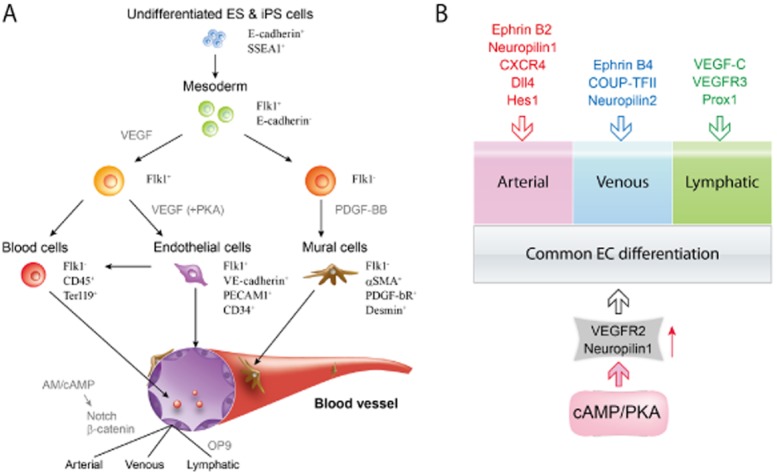Figure 1.

Vascular differentiation system using ES cells and iPS cells (A). Flk1 (VEGFR2) positive cells derived from ES/iPS cells are vascular progenitors that can differentiate into ECs, mural cells and blood cells. ECs have specific characters of arterial-venous-lymphatic ECs. (B) EC differentiation and vascular diversification in vascular development. Vascular formation in embryogenesis is considered to have two main mechanisms: (i) a basal mechanism for common EC differentiation, in which VEGF signalling plays a central role; and (ii) a vascular diversification mechanism working on the basis of common EC differentiation. Vascular diversification, such as artery and vein formation, can be achieved only by activating specific mechanisms in the presence of the basal EC machinery. cAMP/PKA signalling contributes to common EC differentiation through up-regulation of VEGF-A receptors, Flk1 and NRP1. Other protein critically involved in differentiation into arterial, venous or lymphatic vessels are: delta like ligand 4 (Dll 4); hairy and enhancer of split-1 (Hes 1); prospero homeobox 1 (Prox 1); COUP transcription factor 2 (COUP-TFII) (adapted from Yamamizu and Yamashita, 2011).
